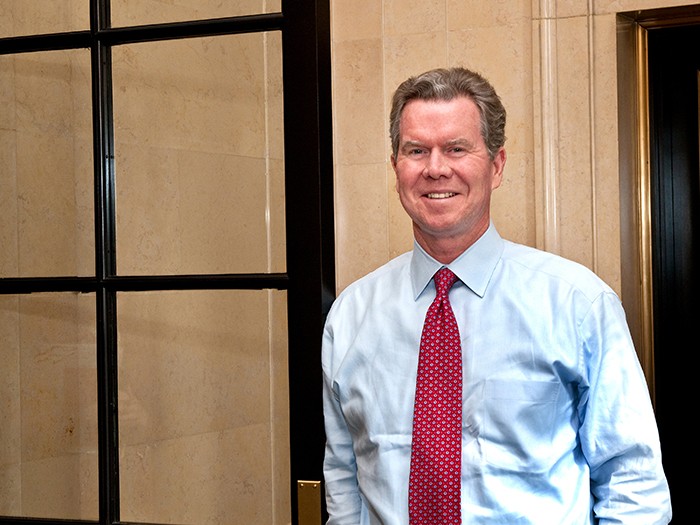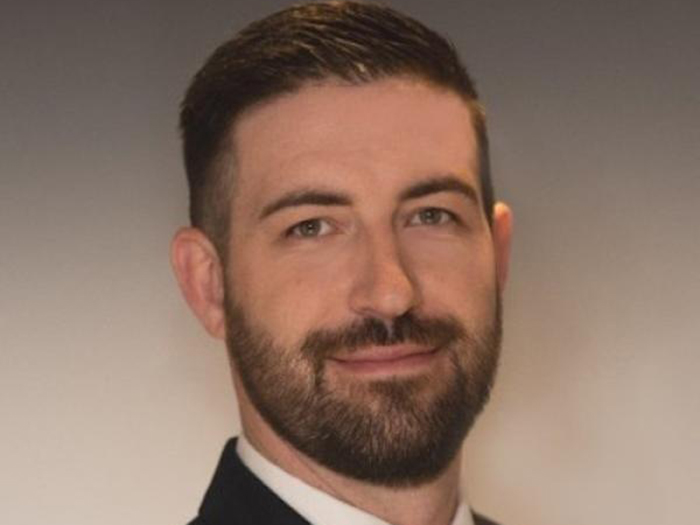Exclusive Memoir
Turning Around The Hartford — Part Two

Take Your Time in Forming Your Executive Team
I needed a leadership team committed to fundamental change. Most executives would tell a new CEO in a turnaround to clean house immediately. There’s something to be said for that, but I didn’t follow that advice, for several reasons.
Coming from another industry, I didn’t have the ready expertise in insurance products in order to decide on big issues right away. While the strategic questions weren’t so complex, the nitty gritty of assessing all these various products and markets, and understanding the total risk, certainly was.
I needed to have the full picture. I did move quickly in replacing the CFO, an action demanded by the markets. But I transferred that person to a different position because of her deep inside knowledge of the company and her commitment to helping to lower the company’s risk.
A turnaround CEO will have a lot of personnel issues to assess, but in terms of priorities I firmly believe that a CEO needs to have a trusted ally in the CFO, general counsel and head of human resources.
The other problem with cleaning house right away is that you need some time to find the replacements. That was especially true for me, as I lacked a strong network of insurance executives that I could recruit from. Finding that kind of talent, in the aftermath of the crisis, was going to be a challenge.
Beyond that, you want to spend some time to get to know the people just below the senior level. There were talented internal people with fresh ideas who were ready for a bigger job.
A. G. Lafley recommends that new CEOs wait at least six months before making big changes, and that’s good advice. For example, I found a very talented individual who executed beautifully our strategy to de-risk the annuity block, including the sale of our Japanese business. She is now our CFO.
Driving change is hard. Some executives will see opportunity in change; others will be uncomfortable with it. In my case, I had several executives who did not agree with the strategic choices I made, and others who thought I was driving change too quickly.
There were some who thought they supported change, but then hesitated at implementation. In putting together a senior team, a turnaround CEO needs to be prepared for abrupt departures. Senior executives are making their own assessment of the likelihood change will be successful, and are learning their own comfort level with driving change.
Departures, particularly by well-liked individuals who have been in the organization a long time, can hurt a new CEO’s standing in the organization for a while. That just reinforces the need to be clearly and frequently communicating with employees about why change is essential.
So aside from the CFO, I didn’t start building my own leadership team until the second year of my tenure. It wasn’t until the end of my third year that I had a core team that I was confident was supportive of our new strategic direction. I had good reasons at the time for the timing of my personnel decisions, but in retrospect I probably waited too long on some of those decisions, and that slowed down implementation of the new strategy.
A turnaround CEO will have a lot of personnel issues to assess, but in terms of priorities I firmly believe that a CEO needs to have a trusted ally in the CFO, general counsel, and head of human resources.
Partner with Your Board
A turnaround CEO has a delicate situation dealing with their Board of Directors. After all, these people were present when decisions were made that led to the decline, and they may have strong relations with some of the senior staff who brought the company through the crisis. On the other hand, the new CEO has been chosen by the board, and entrusted to turn the company around.
Through the strategic review, I built a trusting, collaborative relationship with the board, where we could talk frankly. That strong relationship was invaluable in supporting me in all the difficulties.
I came on as chairman as well as CEO, so I had a lot of authority. But this was my first time as CEO, and I’d never sat on a major board. So I was also figuring out just how to relate to directors.
In my interviews and first few months on the job, I didn’t communicate enough. The directors were obviously looking for fresh leadership, and they wanted a strategic review of the options. They had views on our new direction but they did not impose any on me.
Appropriately, they wanted me to come up with a recommendation. I asked about sacred cows, and was told there were none. That meant the strategic review could be fact based and wide-ranging, and it was.
Through the strategic review, I built a trusting, collaborative relationship with the board, where we could talk frankly. That strong relationship was invaluable in supporting me in all the difficulties.
I also developed trust by treating the inevitable crises as opportunities. When a departed executive voiced concerns to the board that I was pushing the organization too hard, I hired an outside expert to run a 360-degree assessment for me. Her report had a lot of positives, but there were also some strong negative comments that I couldn’t just brush off.
I decided to send the board a detailed summary of the report, so they could see that I was dealing with the issue in an open way. Putting the issue out there freed individual directors to offer me informal feedback. I wasn’t trying to control the discussion.
(I discussed the results of my 360 openly with my senior team as well, seeing it as an opportunity to build support for what I was trying to accomplish.)
Similarly, in 2012 when an activist investor pushed us to move quickly with a more radical breakup plan, I decided against a “circle-the-wagons” approach. I was in a vulnerable position because our stock price was still in the low 20s, having recovered less value than our peers.
But I didn’t get defensive. Instead I continued my open style. Besides staying in close contact with the investor, I worked to keep our board fully informed. I got our CFO and general counsel involved in the presentations too.
That helped to show the directors and others that the attack wasn’t about me and my ego; it was about serving the company’s interests. In the end, the activist investor complimented me and the company on the alternative strategy that we executed, and on the resulting jump in share price.
The hardest part of the turnaround, disposing of the Japanese annuities, also fostered trust with the Board.
One of our directors had some expertise in the area, and he offered to help find a solution. Instead of seeing it as a challenge to my management of the company, I set up an informal working group with him and two other independent directors. I gave them a lot of leeway to work with executives on the issue, while making sure they didn’t cross the line between governance and management.
When we developed our recommended course of action, the fact that it was understood and endorsed by the working group carried enormous weight with the other directors. And the fact that I was willing to give up some control over the problem sent a strong signal to the Board as well.
All of these efforts paid off as we slogged through the turnaround. When I finally did turn over most of the senior team, the board was supportive. The activist investor wasn’t able to divide the Board — we kept on track with the strategy we were already developing.
We were even able to use the outside pressure to build momentum internally for the turnaround. And when we announced the sale of the life business and other big assets, we weathered all the criticism together.
Make Decisions – and Stick to Them
Soon after I arrived, the board showed me the results of a survey of The Hartford’s executives on what they wanted in their next CEO. High on the list was decisiveness, and I wasn’t surprised. That’s why you have a CEO in the first place, after all, so someone can resolve disputes and move the organization forward. The buck stops here.
I had to communicate our new strategy and direction relentlessly.
When I starting talking to people in the organization, however, I saw something very different. When I would push toward a decision, I kept getting resistance.
They said I didn’t understand all the issues – “You don’t have a background in insurance, and this is a complex subject.” I had to take their concerns seriously until I got the new CFO, an insurance veteran who could walk me through the issues in more neutral way.
Then, when I finally did get tough calls through, that was only the beginning. I had to work with my CFO and the business unit heads to make sure that the changes actually stuck.
I had to communicate our new strategy and direction relentlessly. And then I got some surprised reactions from people in the hallway. They couldn’t believe that a big change had actually happened.
Big changes had been announced before, only to be quietly withdrawn or greatly reduced when it came time to implement.
When we sold the life business, we were fortunate to find strategic buyers who could offer jobs to most of our people. Still, it was going to be a tough transition. I expected a lot of upset people in that part of the organization.
Rather than just send a memo and hide in a bunker, I decided to drive over to the life division’s offices in a nearby suburb to deliver the news personally. People weren’t happy about it, but they didn’t throw water bottles at me.
What I wasn’t prepared for was the shock felt in property and casualty and other parts of the organization that we were still keeping. The people there couldn’t believe that The Hartford would actually let go of such a big division. It forced them to think about their company in a whole new way – that it could execute on difficult decisions, not defer on them.
That realization helped me build additional support going forward.
I’m sure I made some mistakes that I could have prevented if I’d spent more time deliberating. But especially in a turnaround, there’s a high cost to delay
There’s a lot of talk nowadays about how leaders need to listen to their colleagues and make sure everyone feels heard. As long people think their input is respected, the argument goes, they’ll be inclined to support whatever decision is made, even if they disagree with it. That’s fine, but there’s a real danger that listening can become an excuse to delay calls on urgent matters.
You have to get tough and lay down the line. I had people calling me out for being ill-informed and reckless, for making a difficult situation even worse.
Many companies get in trouble not from any sudden problems or single mistakes, but from a long tolerance of weak management. CEOs try to be too collegial and supportive, and they end up diminishing their authority.
I’m sure I made some mistakes that I could have prevented if I’d spent more time deliberating. But especially in a turnaround, there’s a high cost to delay. If we’d waited much longer to sell the life business, we almost certainly wouldn’t have done so well with the buyer or the price.
The Hartford is a very different organization nowadays. With the risk management practices we have put in place, I’m confident that something like the run-up in variable annuities couldn’t happen again.
The implications for the overall company would be much more apparent, and people wouldn’t sit idly by, focused on their own unit. The culture has changed to promote decisiveness.
The senior management team is an exceptional group, each accomplished in his or her own field and committed to working collaboratively for appropriate innovations. Let’s just hope that other troubled financial services companies have made a similar change.
Keep Your Eyes on the Prize
A turnaround is a physically and mentally draining process even when most people are on your side. I didn’t have many champions, and my first year was especially lonely.
When conflicts arose, I was tempted to just walk away. Maybe the organization just didn’t want to change, and I couldn’t force it. Or maybe I wasn’t the right person to drive the change.
But I kept thinking there was so much good in the company and its history. I wanted to help build a place where the employees could be proud to work, where they could feel like they were winning again.
Turnarounds are just the most extreme example of the burdens and the privileges of leadership. Most careers have very few real legacy moments. I can look back and cherish my part in restoring this great company.
Part One of Liam McGee’s account of turning around The Hartford can be read here.










